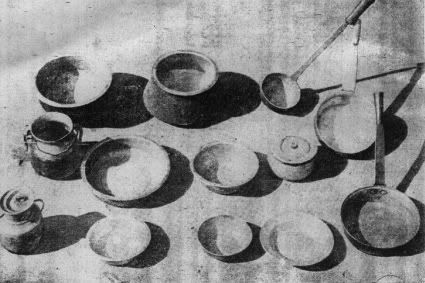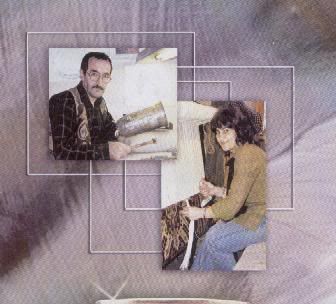Armenians honor their dead with symbolic offerings of food and drink. In
ARMENIAN FOOD: FACT, FICTION & FOLKLORE, we describe this and other funeral customs in the chapter “Feeding the Dead.” I observed these rituals for the first time on September 2, 2000, during my second visit to Armenia. But this was not a memorial occasion for any Armenian dead. It was in remembrance of 17 of my countrymen, yes, Americans, who lost their lives in the skies above Armenia on September 2, 1958.
With a small group of friends, we departed Yerevan early in the morning and headed toward the southwestern foothills of Mount Aragat, Armenia’s highest mountain. We were going to the small village of Nerkin Sasnashen. It was there that the tragedy had occurred in one of the seldom remembered instances when the Cold War became deadly hot.
On that September day in 1958, a U.S. Air Force C-130A airplane, Flight 60528, was patrolling the Turkish-Armenian border, collecting signal intelligence by receiving and recording radio and other electronics broadcasting out of the Soviet Union. Such missions flew on a daily basis as part of the West’s efforts to monitor the communist armed forces. Today, it’s mostly satellites in orbit that collect such information, not airplanes.
Some say that it was an error in navigation. Other blamed the Soviets for “meaconing,” broadcasting false signals to interfere with the snooping planes racing around their borders. For whatever reason, the American plane crossed into Armenian airspace, and was immediately spotted by air-defense radars. Three Mig-19 fighter jets were scrambled from Erebuni Field in Yerevan, and within a few minutes, the American plane was shot down. There were no survivors.
We found the monument just outside Nerkin Sasnashen village. It’s surrounded by stone-covered hills, a rocky, desolate wasteland. The place and the incident had been kept secret by the communist government. But the local villagers didn’t care about such secrecy, nor that those who had died were, at that time, considered enemies. Not long after the shoot down, the people of Nerkin Sasnashen erected a stone cross monument, a
khatchkar, out of Christian sentiment and respect. This was done despite the disapproval of local party leaders. The original
khatchkar was replaced in 1993 with a larger obelisk monument that stands there today.
It was a somewhat eerie, almost surreal scene: the empty space of the badlands, the boulders strewn everywhere, and my Armenian friends surrounding me as I read aloud the names of those who had perished. Undoubtedly, those American names sounded foreign and unfamiliar to them. Finally, I said a brief prayer in English for the fallen airmen and for their families.
My friends had remained respectfully patient and silent during my eulogies. When a bottle of spirits appeared, it was their signal that my part of the ceremony was over.
Now permit us to show respect in our own way, they were telling me. And, as is the Armenian custom, our host, Rubik, began to pour shots of vodka for everyone, so that we could make memorial toasts to the deceased. Reuben told us he regretted that he had not remembered to bring any
lavash bread, cheese, and herbs to accompany the vodka. But that was okay. After visiting the monument, we would visit a restaurant and pronounce the same toasts again. Armenians also share food when they visit cemeteries as a traditional sign of respect.
As we reflected on the tragedy that had occurred 42 years ago, a solitary figure came slowly walking down out of the hills. It was a shepherd who had been tending his flocks farther up the mountainous range. It was easy to see he had been staying in those badlands for quite awhile. He was very thin and had an unkempt salt-and-pepper beard. His clothes were ragged and his skin was deeply tanned.
The shepherd asked if I had had a family member on the American plane that was shot down. I said no, and I explained that it was on this day, 42 years ago, that the incident had occurred, and that we were there to give a prayer and show respect. We were quite surprised when the shepherd said, “Has it really been so long ago? I remember. I saw it.”
He had been a young boy, riding home on a school bus, when the driver suddenly pulled off the side of the road. “They flew over my head,” the shepherd explained. “The Migs were chasing the American plane, and it turned and starting going up. A Mig shot it with
avtomats [machine-gun cannons], and it began to burn. They shot again, and the right wing came off. The burning wing was falling directly towards our school. Another Mig went after the wing and shot it to pieces, and the school was saved. The American plane crashed straight down and exploded. Soldiers came from Gyumri and Yerevan, and the roads were closed for days.”
We offered the shepherd a glass of vodka, and he joined us as we raised our glasses. Reuben made the memorial toast: “These men were sons, brothers, and fathers. May they rest in peace.
Oghormi.”
Oghormi, “Bless your soul,” is the traditional Armenian blessing said at cemeteries and funerals. “
Oghormi,” I said, trying to pronounce the foreign word as best I could. We drank, and then Reuben cast a small splash of vodka toward the monument itself in offering.
Armenians, like other Orthodox Christians, believe that prayers for the dead give the deceased comfort and blessing, an unfamiliar concept for someone like me who was raised in the Protestant faith, where heavenly rewards are considered to be the ultimate comfort. Also new to me were the rituals of bringing food and drink to share with the deceased, gifts of life symbolic in the faith of an eternal life. But as I stood on that stony place, thinking about the 17 young men who had died and how much the world has changed since then, it all somehow seemed the right thing to do.
DAVID UNDERWOOD
You can read about Armenia’s customs of “feeding the dead” in ARMENIAN FOOD: FACT, FICTION & FOLKLORE, by Irina Petrosian and David Underwood, ISBN 1411698659.
Technorati tags: Armenia, Armenian, Armenian Food, Food, Cuisine, Culture, History












